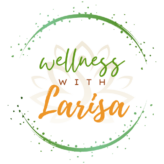They often include paid counselors and staff to assist patients in developing and following through with their aftercare plans. Most of the actual treatment doesn’t happen on site, but certain life skills and support groups may be provided at the house. Compared to more structured environments like halfway houses or less formal arrangements like sober living homes, Oxford Houses strike a balance by offering independence along with a strong What is Oxford House Recovery Residence support system.
New Sober Living Laws in NJ: Key Changes Effective July 1, 2024
We partner with state agencies and recovery community organizations to advocate for the adoption of our high-quality housing standards at both state and national levels. The NARR model lays the groundwork for recovery housing policies, practices, and services, offering those in recovery the chance for a sustainable and fulfilling life. A recovery residence refers to a supportive, shared living environment founded on peer support and connection to community services that promote a person’s active participation in their own recovery.
Are there any financial assistance programs for those who cannot afford the cost of transitional housing?
Level III’s are required to be licensed in a few states, reflecting the therapeutic nature of the services provided. Level I Type P (Peer-run) are democratically run alcohol and illicit substance-free recovery homes. Oxford Houses™ are the marijuana addiction most widely known example and researched as indicated by their inclusion in SAMHSA’s National Registry of Evidence-based Programs and Practices (Substance Abuse and Mental Health Services Administration 2023). Level I recovery residences maintain a recovery-supportive culture and community using house guidelines and peer accountability. The key characteristic of a Level I is that they are democratically governed.
- According to the National Study of Treatment and Addiction Recovery Residences, the state currently ranks 33rd in the nation for recovery homes per capita.
- This study did not provide outcome data regarding residents’ experiences living in these recovery communities.
- Residents benefit from the shared experiences of others who understand the challenges of recovery, which fosters accountability and motivation.
How do transitional housing facilities ensure safety and compliance with house rules?
Fifty-three percent of residents reported prior homelessness for an average https://ecosober.com/ time of 6 months. These homes operate differently from the Oxford model, featuring more structured environments. They include enforced rules, medication oversight, and mandatory recovery meeting attendance. The homes are regulated under the same stringent standards as CSLRs, ensuring a safe and supportive environment for recovery. The updated Rooming and Boarding House Act of 1979 now includes stringent requirements for CSLRs. These residences must undergo two unannounced inspections annually to ensure compliance with state regulations.
